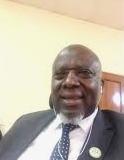Culture and Educational Policy in Uganda
DOI:
https://doi.org/10.53449/ije.v7i1.371Keywords:
culture, decentralisation, globalisation, Islamic knowledge, language, multi-culture, policyAbstract
Cultural beliefs have a significant influence on the values of a society. Policy makers cannot ignore culture while planning for educational reforms. In a country like Uganda that is multi-cultured, the task of addressing all cultural needs becomes a little tricky. In this paper the author has tried to analyse the body of existing literature on the subject and been able to identify some cultural issues affecting educational policy such as misconceptions, cultural conservatism, multi-culturalism, early-marriages, multiple languages, gender parity among others. Various conclusions and recommendations are made and they include but not limited to; affirmative action, intercultural dialogue, decentralisation of educational policies, promotion of globalisation and human rights.
Downloads
References
Al-Attas, S. M. N. (1979). Preliminary thoughts on the nature of knowledge and the definition and aims of education. In S. M. N. Al-Attas (Ed.), Aims and objectives of Islamic education. Jeddah: King AbdulAziz University.
Al-Faruqi, I. (1989). Islamization of Knowledge. Herndon: IIIT
Ahaibwe, G., Mbowa, S., & Lwanga, M. M. (2013). Youth Engagement in agriculture in Uganda: Challenges and prospects. Kampala: EPRC.
Altinyelken, H. K. (2012). Converging pedagogy in the developing world? Insights from Uganda and Turkey. In A. Verger, M. Novelli, & H. K. Altinyelken (Eds.), Global education policy and international development: New agendas, issues and policies (201-221). New York: Continuum.
Ashraf, N., Bau, N., Nunn, N., & Voena, A. (2018). Bride price and female education. JEL, 1-40.
Azubuike, O. C. (2013). Consideration of culture in the development of homeeconomics curriculum in Nigeria. Journal of Educational and Social Research, 3(9), 183-188.
Bertoni, E., Maio, M. D., Molini, V., & Nistico, R. (2019). Education is forbidden: The effect of the Boko Haram conflict on education in North-East Nigeria. Journal of Development Economics, 1-47.
Bodycott, P., & Lai, A. (2012 ). The influence and implications of Chinese culture in the decision to undertake crossborder higher education. Journal of Studies in International Education, 16(3), 252-270.
Burton, E., (2020). Engineering socialism: The Faculty of Engineering at the University of Dar es Salaam (Tanzania) in the 1970s and 1980s. In D. Matasci, M. B. Jerónimo, & H. G. Dores (Eds.), Education and Development in Colonial and Postcolonial Africa. Cham: Palgrave Macmillan.
Caldwell, B. J. (2009). Centralisation and decentralisation in education: A new dimension to policy. In J. Zajda & D. Gamage (Eds.), Decentralisation, school-based management, and quality. Globalisation, comparative education and policy research (Vol. 8) (53-66). Dordrecht: Springer.
Cuc, M. C. (2014). Educational policies to promote cultural diversity. Social and Behavioral Sciences, 127, 53-57.
Chowdhury, M. (2016). Emphasizing morals, values, ethics, and character education in science education and science teaching. The Malaysian Online Journal of Educational Science, 4 (2), 1-16.
Datzberger, S. (2017). Peacebuilding through non-formal education programmes: A case study from Karamoja, Uganda. International Peacekeeping, 24(2), 326-349.
Flavia, J. (2012, November 5). The influence of culture on education. https://www.kenyaplex.com/resources/5769-the-influence-of-culture-on-education.aspx
Forehand, M. (2015). Bloom’s Taxonomy. In P. Lombardi (Ed.), Instructional methods, strategies, math and technology to meet the needs of all learners (147-160). Tess: Granite State College. https://granite.pressbooks.pub/teachingdiverselearners/chapter/blooms-taxonomy-2/
Focas, L. (2000). Alternative Basic Education for Karamoja (ABEK) - Uganda. EENET.
Frese, M. (2015, August). Cultural practices, norms, and values. Journal of Cross-Cultural Psychology, XL (10), 1327-1330.
Gyagenda, A. (2023). Application of Bloom’s Taxonomy in the instruction of Islamic education. Interdisciplinary Journal of Education, 6(1), 29–39.
https://doi.org/10.53449/ije.v6i1.222
Gyagenda, A. (2023). Need for a total revamp of the Ugandan educational system towards enabling local graduates to compete on the global scale. International Journal of Academic Research in Progressive Education and Development, 12(1), 767–777.
Gyagenda, A. (2021). Integration of modern ICTs as modes of instruction for Islamic education in higher institutions of learning. Interdisciplinary Journal of Education, 4(2), 133-145. https://doi.org/10.53449/ije.v4i2.62
Gyagenda, A. (2021). The relevance of Al-Ghazali’s educational views to the contemporary system of Muslim education: Focus on Islamic education in Uganda. Interdisciplinary Journal of Education, 4(1), 1-12. https://doi.org/10.53449/ije.v4i1.149
Hamer, K., McFarland, S., Czarnecka, B., Golińska, A., Cadena, L. M., Łużniak-Piecha, M., & Jułkowski, T. (2020). What is an “ethnic group” in ordinary people’s eyes? Different ways of understanding it among American, British, Mexican, and Polish Respondents. Cross-Cultural Research, 54(1), 28-72.
Hussein, A. M. (2016). To investigate the impact of cultural practice and beliefs affecting schools going children in Somali community - Kenya. International Journal of Humanities and Social Science Invention, 5(9), 69-72.
Högström, J. (2011, February 16-19). Challenges and transformations in the qualities of democracies: A comparative perspective I [Paper presentation]. The first IPSA-ECPR Joint Conference; Whatever Happened to North-South? (pp. 1-24). Sao Paulo.
Idang, G. E. (2015). African culture and values. Phronimon, 16(2), 97-111.
Jacovidis, J. N., Anderson, R. C., Beach, P. T., & Chadwick, K. L. (2020). Growth mindset thinking and beliefs in teaching and learning. Inflexion.
Jarlais, C. L. (2009). Cultural characteristics of Western educational structures and their effects on local ways of knowing. University of Montana.
Jordan, E. (1991). "Making good wives and mothers"? The transformation of middle-class girls' education in nineteenth-century Britain. History of Education Quarterly, 31(4), 439-462.
Joshee, R., & Johnson, L. (2005) Multicultural education in the United States and Canada: The importance of national policies. In: N. Bascia, A. Cumming, A. Datnow, K. Leithwood, & D. Livingstone (Eds.), International handbook of educational policy. Springer International Handbooks of Education, vol 13. Springer, Dordrecht. https://doi.org/10.1007/1-4020-3201-3_3
Kahise, Y. (2013). Effects of culture on access to secondary school education for girls in Kisarawe. Open University Of Tanzania.
Kaur, R. (2021). Speech on ‘A school is a miniature society’. https://www.ipl.org/essay/Juvenile-School-Society-In-The-Juvenile-Period-PKPNUFH4SJF6
Knights, D., & Richards, W. (2003). Sex discrimination in UK academia. Gender Work and Organization, 10(2), 213 - 238.
Krätli, S. (2009). ABEK (Alternative Basic Education for Karamoja): Strategic review. https://www.researchgate.net/publication/294088836_ABEK_Alternative_Basic_Education_for_Karamoja_Strategic_Review_2009
Lewis, B. A. (1991). The Kids Guide to Social Action. Minneapolis: Free Spirit Publishing.
Li, Z., & Qiu, Z. (2018). How does family background affect children’s educational achievement? Evidence from contemporary China. The Journal of Chinese Sociology, 5(13), 1-21.
Mantiri, O. (2013). The influence of culture on learning styles. SSRN. https://ssrn.com/abstract=2566117
Matambo, E. 2018. Formal against indigenous and informal education in sub-Saharan Africa: The battle without winners. Indilinga – African Journal of Indigenous Knowledge Systems 17 (1): 1-13.
MGLSD. (2019). Uganda National Culture Policy. Kampala: GOU.
Miller, S. I. (1981). Defining educational policy studies as a field. Educational Studies, 12 (2), 119-124.
Mokibelo, E. (2016). Implementation of the Language-in-education Policy and achieving Education for All goals in Botswana primary schools. Universal Journal of Educational Research, 4(1), 157-168.
Morley, L. (2000). The micropolitics of gender in the Learning Society. Higher Education in Europe, 229-235.
Muhwezi, D. K. (2003). Gender sensitive educational policy and practice: A Uganda case study. Kampala: UNESCO.
Mukisa, B., & Makuthi, J. (2021). Teaching in the mother tongue: Impact on learning in early childhood education. Kampala: Tusome Africa.
Muzoora, M., Terry, D. R., & Asiimwe, A. A. (2014). The valorization of African languages and policies in the African education systems: A case of Uganda. Universal Journal of Educational Research, 2(1), 42-50.
Ngaka, W., Graham, R., Masaazi, F. M., & Anyandru, E. M. (2016). Generational, cultural, and linguistic integration for literacy learning and teaching in Uganda: Pedagogical possibilities, challenges, and lessons from one NGO. Journal of Language and Literacy Education, 12(1), 81-103.
Namukasa, I., & Buye, R. (2007). Decentralization and education in Uganda. Comparative and International Education / Éducation Comparée et Internationale, 36(1), 93-116.
NCDC. (2021). History and Political Education Text book Senior One. Lower Secondary Curriculum. Kampala: NCDC.
Odaga, G. (2020). Affirmative action and women in uganda’s public university education. Higher Education Policy.
Offorma, G. C. (2016). Integrating components of culture in curriculum planning. International Journal of Curriculum and Instruction, 8(1), 1-8.
Onsongo, J. (2009). Affirmative action, gender equity and university admissions – Kenya, Uganda and Tanzania. London Review of Education, 7(1), 71-81.
Owen, J. (2021). Girls’ education: Facts and how to help. https://www.worldvision.ca/stories/education/girls-education-facts-and-how-to-help
O’Toole, L. (2015). Student-centered teaching in Initial Teacher Education. International Journal for Cross-Disciplinary Subjects in Education, 6(1), 2111-2119.
Preez, P. d., & Roux, C. (2010). Human rights values or cultural values? Pursuing values to maintain positive discipline in multicultural schools. South African Journal of Education, 30, 13-26.
Republic of Uganda Constitution, (1995) Art. 33.
Sinyaginaa, N. Y., & Rayfschnaydera, T. Y. (2016). The policy of multicultural education in Russia: Focus on personal priorities. International Journal of Environmental & Science Education, 11(18), 12613-12628.
Song, L. (2009). The effect of the cultural revolution on educational homogamy in urban China. Social Forces, 257-270.
Soni, S. (2020). Institution of dowry in India: A theoretical inquiry. Societies Without Borders, 14(1), 1-17.
Ssentanda, M. E. (2014). The challenges of teaching reading in Uganda: Curriculum guidelines and language policy viewed from the classroom. Journal of Applied Language Studies, 8(2), 1-22.
Stanford Encyclopedia of Philosophy. (2018). Stanford.
Torjman, S. (2005). What is policy? Ontario: The Caledon Institute of Social Policy.
UNESCO. (2021). Socio-cultural barriers to schooling. Unesco.
Townsley, N. C., & Geist, P. (2021). The discursive enactment of hegemony: Sexual harassment and academic organizing. Western Journal of Communication, 190-217.
Tumwebaze, S. K. (2017). Implementation strategy for advocacy of local languages. GOU, Kampala.
Wang, M.-T., & Degol, J. L. (2017). Gender gap in Science, Technology, Engineering, and Mathematics (STEM): Current knowledge, implications for practice, policy, and future directions. Educ Psychol Rev, 4(1), 119-140.
Welch, P. (2007). Feminist pedagogy revisited. Learning and Teaching in the Social Sciences, 3(3), 171-199.
Westheimer, J. (2006). Politics and patriotism in education. Phi Delta Kappan, 87(8), 608-620.
Williams-Breault, B. D. (2018). Eradicating Female Genital Mutilation / Cutting: Human rights-based approaches of legislation, education, and community empowerment. Health and Human Rights Journal, 20(2), 223-233.
Woodrow, D. (2001). Cultural determination of curricula, theories and practices. Pedagogy, Culture and Society, 9(1), 1747-5104.
Yong, E. L. (2019). Understanding cultural diversity andeconomic prosperity in Europe: A literature review and proposal of a culture-economy framework. Asian Journal of German and European Studies, 4(5), 1-34.
Zimmermann, K. A., & McKelvie, C. (2021). American culture: Traditions and customs of the United States.
LiveScience: https://www.livescience.com/28945-american-culture.html
Downloads
Published
Issue
Section
License
Copyright (c) 2024 AbdulSwamad Gyagenda

This work is licensed under a Creative Commons Attribution-NoDerivatives 4.0 International License.








